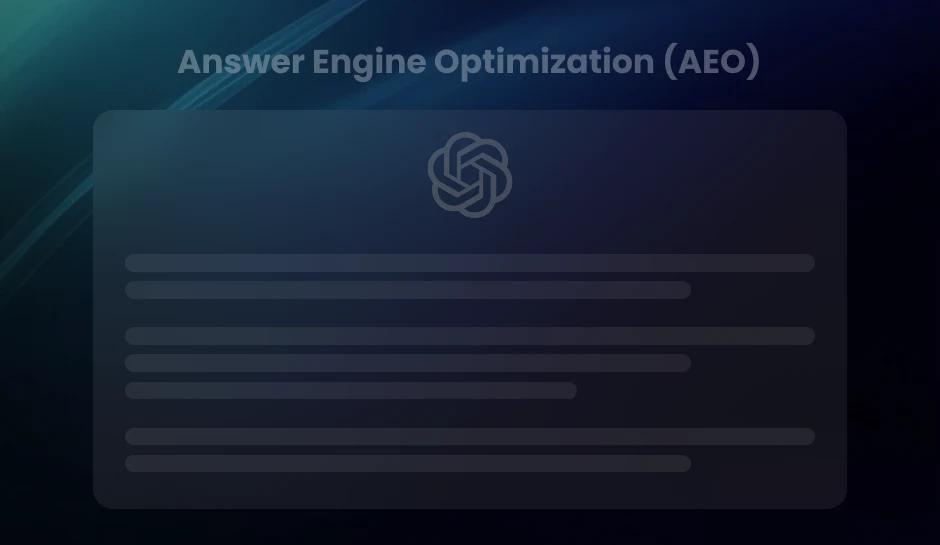In this episode of The Revenue-Focused Marketer, Hershey sits down with Mary Yang to discuss how marketers can build smarter, more aligned go-to-market engines in today’s AI-powered landscape. Mary shares insights from her 20+ year career across high-growth SaaS and cybersecurity startups, offering a grounded perspective on marketing’s evolving role as a revenue driver.
From sales alignment to content strategy and AI experimentation, this conversation is packed with practical advice for early-stage founders, marketing leaders, and anyone navigating B2B growth in technical spaces. Mary also speaks candidly about attribution challenges, shadow IT, and how to partner even with competitors to better serve your customers.
By tuning into this episode, you can expect to come away with an understanding of:
- Why deep collaboration with product and sales matters more than ever
- How AI is changing content workflows, and where it still falls short
- Mary’s take on smart, low-risk ways to experiment with new marketing tech
- Real talk about attribution, CRMs, and using AI responsibly in ops
- Advice for early-stage startups on navigating growth with limited resources
Featured Speakers:-

Mary Yang
Chief Marketing Officer – SquareXMary Yang is a strategic and hands-on marketing leader with a background in B2B SaaS, cybersecurity, and public sector startups. As the Chief Marketing Officer at SquareX, she helps shape go-to-market strategies that align product, sales, and customer value. Known for building efficient teams and processes in early-stage companies, Mary brings a collaborative, no-fluff approach to marketing leadership. She’s a big believer in cross-functional alignment, experimentation with AI, and making sure marketing earns its seat at the revenue table.

Harshika Chadha
Lead Product Manager – DiGGrowthHarshika is a seasoned product manager passionate about business transformation, design thinking, technology, marketing trends, SaaS security, and human-computer interactions. Her deep interest in the intersection of these fields keeps her at the forefront of industry insights, uncovering success strategies for today’s fast-changing business landscape.
More From Our Content Repertoire:
- How To Become An AI-Ready Organization
- A Marketer’s Guide to Overcoming Attribution Blind Spots
- From Cost Center to Profit Driver: Transforming the Perception of Marketing
Transcript
0:11:
Hello and welcome to another episode of the revenue-focused marketer where we discuss anything and everything related to marketing as well as data.
0:19:
, I’m your usual host, Hershey, and today’s guest is Mary.
0:24:
Mary is someone who brings sharp strategy, deep product thinking, and now a bold new CMO hat.
0:30:
She’s been at many different companies, from big corporate companies to early stage startups.
0:36:
And now she’s redefining what marketing leadership means, and she’s working at Squarex now.
0:41:
So Mary, thank you so much for joining us today.
0:44:
I’m so excited to have you here.
0:46:
Thank you for having me.
0:47:
I’m excited for the conversation.
0:49:
Yeah, so for our listeners here today, where are you joining in from?
0:53:
I’m in the Washington DC area today.
0:55:
Awesome.
0:56:
And I think for our listeners, maybe we can start off with like You know, understanding you better by understanding your career evolution.
1:05:
So, you know, maybe we can start off with your journey.
1:08:
It’s been such a rich journey.
1:10:
I think you’ve been at being Google startups, and how do you think each of these phases have shaped your marketing brain today?
1:17:
, that’s a great question.
1:19:
I often say that I fell into marketing.
1:22:
I was not planning on being a marketer.
1:25:
But I realized when I finished with school that I had student loans and needed a job.
1:32:
And the best skills that I had were around writing and editing.
1:37:
And so I looked for jobs where I could use those skills because I knew I was good at those two things.
1:42:
And and so that’s how I fell into marketing.
1:44:
It was really a marketing communications role initially.
1:48:
And I just sort of, you know, figured out my way a little bit with those early jobs.
1:54:
I jumped around a little bit.
1:55:
I went from a marketing communications role to a product marketing role, and then I actually ended up doing sort of what we would call now growth marketing to a large degree, really focused on marketing execution, actually none of the writing and editing that got me started in marketing, but it was actually really eye-opening because I was now able to see, I had a counterpart who did all of the marketing communication stuff, and then they handed it over to me and I would execute on all of the campaigns, work really closely with sales, and that really allowed me to see the sort of other side of the marketing puzzle, right?
2:31:
I had been previously creating content and pushing things out, but never really understanding how to measure whether it was successful or not, and that.
2:41:
Marketing sort of role really opened up my world to say, well, here’s what happened on the other side once this content is created, and here’s how to measure it and actually see if it’s successful.
2:53:
And so that was a really eye-opening experience for me.
2:56:
I say, I joke that I spent more time in Excel sheets during that period of my marketing career than I ever did in Word or PowerPoint or any other tools that you think for marketing.
3:08:
And, and it was, that was really foundational to me.
3:12:
I saw in that role as well, what it meant to really have a strong marketing operations process and engine, , and it was critical, I think, as I moved on from that position to really opening up the the strategy portion, right?
3:29:
It really allowed me to say as I moved further along in my career, here’s all of these pieces.
3:34:
That need to work together across marketing to really be impactful.
3:38:
And so, you know, from there I kind of went back into marketing, cons, content marketing, and then really just kind of came into places where I was able to go deep into subject matter for what it was that I was marketing, which was cybersecurity and, and that’s kind of what’s gotten me into CMO roles sort of in the last few.
3:59:
years.
4:00:
Yeah, no, that’s amazing and thank you so much for sharing your journey with us today.
4:05:
I kind of want to dive deeper into, like, you know, what’s been the hardest narrative to break or reshape in the cybersecurity space, right?
4:13:
This is much different than kind of being in any other space with marketing.
4:18:
So I’m just trying to understand like in this super noisy world, how does marketing kind of play a role in the security side?
4:25:
Yeah, that’s a great question.
4:27:
I have, , I have multiple soapboxes about cypher and marketing.
4:32:
I personally think, and this is probably not that surprising, that marketing can get a really bad rap in security, especially in cyber, right?
4:40:
, there was, there was an individual that I’m connected to on LinkedIn who, when the crowd strike sort of debacle happens, , last year.
4:51:
Yeah.
4:53:
This individual posted on LinkedIn about how, you know, this was all marketing’s fault, right?
4:59:
And that, you know, this is because marketing is out there sort of promising the moon and so, you know, engineers are having to deliver and it was just the hot, like the hottest, most ridiculous take that I saw on the Crow strike situation, which wasn’t even a cyber issue.
5:18:
Right, like, and so, so, but, but I think that in some ways that, that often feels very typical of the community, and I can understand why cybersecurity folks might think that, right?
5:31:
There’s so much stuff that’s being thrown at them.
5:33:
They’re probably getting 1000 emails a day from a vendor, right, or vendors.
5:38:
It’s, it is a lot of noise.
5:40:
I think that the part of the Now, really the role that I think marketing plays in within this community especially is about really making sure that we’re providing valuable content and information to the community, right?
5:57:
And I think that there’s a lot of ways in which vendors can do that and have it be meaningful.
6:03:
So this kind of goes really back to my start in content marketing, which is about trying to drive thought leadership.
6:11:
Being helpful, being able to provide actually meaningful information for our audience, , and that’s actually one of the things that I think is really interesting about the stuff that SquareX does.
6:23:
They’re right now they’re, , for this year for 2025, and they’re really seeing unique first party research and threat intelligence every month around what they’re seeing around browser security and it’s just really interesting work.
6:38:
They’re showing how they’ve come to this, like how they can, how they found the vulnerability and some of the ways that you can stop that from happening.
6:47:
And that’s the kind of information that like it’s my job to get it out there and to make it useful to the community as widely as possible so that people are better protected.
6:58:
No, that’s wonderful and that’s very unique from what we kind of see in marketing in your day to day, like, you know, different spaces right now, so.
7:06:
So I, I love that, you know, you kind of utilize what people really need and then use that to kind of spread that information about it.
7:14:
, I, I’m sure it takes a lot of investment to kind of like, you know, go back to that firsthand research, but I think that primary research then creates a lot of noise out there when it’s being marketed properly.
7:28:
So what is like a maybe a typical go to market strategy look like when, you know, the product is.
7:34:
So deeply technical in your case also.
7:36:
Yeah, so I think that foundation in content is really important, but I also think from a marketing standpoint, this is another one of my soapboxes.
7:46:
I really believe that marketing folks in cybersecurity, especially and in highly technical fields, need to understand some of the foundational sort of basics of the field that they’re in.
7:59:
And so, yeah, I was really.
8:01:
We, I think lucky in being able to have my cybersecurity sort of career start from a really technical place.
8:10:
And so I was working with the MIA Corporation and the National Institute of Standards and Technology, and I really got my start in understanding of cybersecurity in those two places and understanding that language, the language that our key audience, the cybersecurity folks, they speak the way that they think.
8:29:
The frameworks that they have to hold themselves to, that they have to implement in their jobs.
8:35:
All of that stuff is really important.
8:37:
And so I think from a marketing standpoint, like that’s almost first and foremost the most critical piece because that also puts you in the heads of those individuals and enables you to have empathy and sympathy for their day to day.
8:52:
And I think that if you don’t have that, it’s gonna be really hard to cut through.
8:57:
That noise to really market effectively to share the information that you have, that can be meaningful to them.
9:03:
1000%.
9:04:
I think I’ve seen it, like, you know, many examples when the marketing experts are not very technical themselves.
9:11:
You can see like even their website can’t really point out what they really do.
9:15:
Like, you know, if your core messaging can’t really establish what your company does, that kind of goes back to people not really knowing the product and I I think that’s definitely not the route most people want you to kind of go, right?
9:29:
Because you don’t want misinformation out there about the product.
9:33:
I don’t like, you know, people can be spending a lot of money on their ads and spending a lot of effort, but it kind of goes back to like the root foundation of the content piece and the knowledge to back that content isn’t done correctly, then whatever you do, it’s gonna, you know, not really help you convert anyone because you don’t even know what you’re selling at that point.
9:53:
Exactly.
9:53:
Yeah, I had a, there was one role I went went into where I started.
9:58:
I was reading through their content and, you know, they were using words like, you know, detecting threat, but they weren’t a detection tool.
10:08:
They did not develop detection technology, but they didn’t have folks who understood that in cyber detection is a very specific thing, right?
10:18:
They were scanning and they were for vulnerabilities and they could identify vulnerabilities, but they did not detect vulnerabilities and insecurity, especially ident identifying and detecting are two different types of things, but you wouldn’t know that if you don’t have that foundational background.
10:38:
And so it was it’s stuff like that that I think it’s really important for marketers in security and for folks who are looking to get into that, into this field in particular, those are some of the nuances that you really have to understand.
10:50:
Yeah, I really agree.
10:51:
Like I kind of work in the sad space now and for me to be able to be good at the product and like, you know, even be able to deal with the marketing teams that work on the product, it was so important to get those foundations right?
11:05:
because small differences can be made from words that you kind of utilize like the example that you shared.
11:11:
So it’s really intriguing, like, you know, people kind of focus on pretty much.
11:15:
The heavier stuff and things like how much money you’re spending, but sometimes overlook the basics and I think doing marketing the right way it’s really important to kind of start from scratch, build your foundations, and then focus on the other pieces, right?
11:31:
Yes, exactly.
11:32:
Yeah, and so I think, you know, once you get that that content down, that language, you under, you have a true sort of understanding of that target audience that you’re going after.
11:44:
Then really I think that the at least in security that go to market approach is a demand focused approach, right?
11:51:
So once you put that good content out there, people are gonna come back and seek it from you and ultimately when they’re ready, they will raise their hand and say, hey, I want to talk to someone about learning more about your product, right?
12:04:
Certainly we want to make sure that the calls to action for, you know, scheduling a demo or getting pricing, that those are all over the place.
12:11:
But at the end of the day, we are not trying to get someone on the phone who isn’t interested in hearing about the product, that doesn’t help anyone that just wastes everyone’s time, right?
12:23:
And so we’re happy to put that content out there, ungated, show, show folks what we know, show them that we’re really a partner with them in this journey and improving their security, and when they’re ready to chat with us and talk to us, we’ll be ready to go and we’ll show them.
12:39:
All the things that we think are great, but that kind of demand gen focused approach, waiting for folks to be ready to talk to us, that’s really the go to market strategy that I think works well in the charity world.
12:51:
Definitely.
12:52:
And you know, you’re kind of here responsible for building trust as a brand in a category that’s often really led with fear, right?
13:01:
Yeah, so I think, of course, what you’re doing here to kind of make that content.
13:07:
To all having people access that kind of also goes back into creating more credibility for yourselves and for your brand.
13:15:
Are there any other, like, you know, trust factors that you kind of utilize, especially in a space that is so fear led?
13:21:
Yeah, so I definitely think that along the same lines is making sure that contents out there, making sure that our team is speaking, right, and sharing that research and so we’re getting ready to head to some of the big Security conferences this year, presenting this research, making it clear that like our team is ready, our researchers are ready, able, willing to have conversations to walk people through how it is that we found things as well as some of the ways that we found to stop those attacks from happening and really just kind of being open to sharing and having those conversations.
13:57:
, our CEO is also doing these things, right?
13:59:
So our research team is doing this, but really just making sure.
14:02:
Sure we’re a resource to the community.
14:05:
That’s a big piece of it, being at these shows and having these conversations and sharing what we found, I think it’s important too.
14:12:
And then, you know, there’s also the working with other partners and and vendors in this space and oftentimes I think especially for cybersecurity companies, it can feel very isolating like we want to be the only vendor that you’re talking to.
14:30:
But that’s just not the world that we live in, right?
14:32:
We live in this ecosystem and so it’s about, you know, what other cybersecurity vendors care about these things that we care about and how do we partner together to go to market more effectively.
14:44:
That’s wonderful.
14:45:
That’s such a unique perspective also because, you know, typically you would think of competitors as like, oh, you don’t want to kind of, you know, indulge with them, but sometimes like you’re saying collaborating with them, you can create more of a Awareness and you can kind of like, you know, team up to solve certain problems that people do have.
15:03:
So that’s a very unique perspective.
15:05:
Thank you for sharing that.
15:07:
Yeah, I’ve actually heard from CIOs who sort of prefer to be able to do, you know, a dinner or a meeting with multiple vendors at one time versus just one vendor, and some of that is just to kind of get, you know, have it all in one go versus having to meet with each vendor separate.
15:26:
right, and so there’s an interesting way in which, you know, if, if we really believe that we’ve got the best product out there, it doesn’t matter who’s standing next to us because our value will show through.
15:37:
Yeah, no, definitely.
15:39:
I think that kind of goes back into like, you know, all the focus that goes into building the right product and once you have those foundations correctly done, even people that are pitching from your side, them knowing those foundations will ultimately make all the difference.
15:53:
So I’m really glad you shared that.
15:55:
I think I do want to dive into like, you know, where do you see marketing going now?
15:59:
Like, I know a lot of focus has been on AI these past couple of years now, especially for the past, I would say 1 year and a half, like generative AI and agentic AI they’ve kind of become like, you know, those really key words that that everybody is using.
16:17:
So what are your thoughts and like, you know, future of marketing in this space and also.
16:21:
So utilization of AI.
16:23:
Yeah, , I think that, , if you’re not all sort of in on experimentation with AI already, , you’re probably already a little bit behind the curve on the marketing side.
16:34:
We’ve been using AI on the marketing side within my teams for the last couple of years now, really when it started to, , to get big, you know, we started to experiment with that.
16:45:
That is the nice thing about being in startups is that it’s pretty easy.
16:49:
Easy just to kind of start playing around and seeing what you can do.
16:53:
I think it’s gonna be huge, right?
16:54:
I think it has definitely accelerated the way that we’ve been able to, certainly on the Gen AI side, develop content, refine it, and really push it out more quickly.
17:04:
This doesn’t negate the need for people, right?
17:07:
I, I often have seen Gen AI hallucinate even when I’ve given it directly the sources I want it to pull from.
17:15:
It was still.
17:17:
Yeah and so you really do need smart marketers who are able to understand, OK, and think through like, does this make sense?
17:25:
Is the output logical?
17:27:
Does it tie back to the things that I know are true within the the space that we’re in, right?
17:35:
So from a security perspective, is it making up?
17:37:
frameworks is that making up attacks that don’t exist, right?
17:41:
A lot of these things I’ve actually seen happen with Gen AI.
17:44:
And so, again, going back to that foundational sort of knowledge about the space, that also helps kind of clear through what’s fake and what’s real.
17:54:
And then the, you know, making sure that we’re pushing.
17:57:
that stuff that is going to be useful is meaningful, and I think that’s all sort of on the content side on the more revenue generating sort of pipeline side of the house.
18:08:
So we’re starting to see AI functions being built into things like the CRM and what our traditional marketing operations engines, right?
18:16:
And so, There’s always gonna be, I think, , some risk and you wanna make sure organizationally that your executive team and your, you know, risk officer understand the access and the scope of this, but you’re having AI be able to look through essentially your your CRM, the marketing.
18:39:
Touches, the conversations that are happening by email and really being able to pinpoint like, hey, we think that this is the kind of content that’s gonna be really meaningful for this individual.
18:50:
Let’s figure out how to serve up that content to that individual, , in the next, , sort of engagement so that we’re again in value.
18:59:
For that lead or that prospect, that’s where I think we’re still working through some of that.
19:06:
I think some folks are doing that really well already, but it’s maybe more in piece parts, right?
19:12:
It’s a couple of different tools pieced together.
19:14:
I think that’s gonna start to happen much more quickly in the next year across the sales and marketing.
19:22:
And that’s really the stuff that kind of supercharge all of your go to market efforts.
19:28:
Yeah.
19:28:
And I think you have to be thinking about that as a marketing leader, just because that’s kind of where the business is going.
19:34:
Definitely.
19:35:
And I think another huge piece of marketing is also like, you know, attribution, which has always been tricky, especially with like, you know, longer B2B sales cycles, so like, have AI powered analytics helped solve anything at square X yet or like, you know, is that something that you’re Still exploring with the kind of future that’s moving on with AI.
19:56:
Yeah, that’s definitely something we’re exploring.
19:58:
We haven’t implemented it yet.
20:00:
, we’re still fairly early days.
20:02:
And so just kind of getting our engine going is where we are right now, , but definitely understanding sort of the multi-touch attribution picture, it’s so difficult to do in marketing and then.
20:15:
I like to talk about that a lot, but it has been, you know, I was talking about it, , just last week with some folks.
20:23:
It is a very difficult thing to ask a marketing team and a marketing leader to really produce.
20:29:
You’re never, I mean, the current state of these systems is you don’t get 100% no matter what.
20:34:
And so being able to leverage AI to source some of that.
20:40:
would be really interesting.
20:41:
Yeah, a lot of like, you know, for us, a lot of our folks at the growth have kind of been talking about, like, you know, garbage in is often garbage out.
20:51:
So like, you know, what you kind of getting those foundations again, right, even with data, make a huge difference.
20:58:
utilizing AI, so that’s what our folks here have kind of, you know, specialized now with time, but I do want to dive into like, you know, kind of understanding for folks that are still like, you know, early stage startups that are probably in technical fields also.
21:17:
, what maybe like, you know, last piece of advice would you have or a biggest takeaway from this session for them.
21:24:
So I definitely think on the AI side, you have to be experiment, and that’s in some ways, that’s true, I think, whether you’re a startup or whether you’re in a really large organization.
21:36:
It’s not always easy.
21:37:
It’s not as easy in a large organization.
21:40:
I like to joke that marketing is the bane of every like insecurity person’s existence because we’re the ones who are doing all the shadow shadow shadow IT usage.
21:50:
And so, you know, as an executive, I would say, you know, go out, make sure that you’re OK to experiment with these things.
21:59:
But really start to play with the different AI tools that are out there.
22:03:
I think that’s the kind of stuff that’s really exciting and can really supercharge your go to market, right?
22:09:
It’s a, it’s a fascinating new space.
22:12:
I’ve heard people say that this sort of AI revolution is just like the days of the internet getting started, right?
22:20:
It’s gonna revolutionize.
22:21:
The way that we do business.
22:23:
And I actually, I 100% agree with that.
22:25:
It’s fascinating the stuff that you can do now with AI and sometimes scary.
22:30:
And so really being able to understand it and the best way, I think, is just by experimentation, play a little bit with it.
22:37:
I understand some of the use cases, like where are you having maybe a little bit of friction in your process?
22:43:
Where do you think you could Use a little bit of support, right, especially if you’re a startup, you don’t have a lot of resources, where do you really need help?
22:50:
And then define a use case and then run that as an experiment with AI and see how far you get.
22:56:
Wonderful.
22:57:
That is such a good piece of advice and I think this entire episode has been so insightful.
23:03:
I, I’m sure it’s clear that you’re bringing not just marketing.
23:07:
jobs with clarity, confidence, and, you know, a lot of purpose to what you’re doing at Squarex.
23:12:
So thank you so much for, you know, sharing your journey with us today and sharing some really good examples from like, you know, what people can do and what not to do.
23:21:
I know I really learned a lot from this session and then I’m sure our listeners will too.
23:26:
So thank you once again.
23:28:
Thank you so much, Hershey.
23:30:
This is great.
23:30:
Yeah, also, and for our listeners that are tuning in, do let us know your thoughts and Mary, like, you know, before we wrap up, for people that do want to follow your journey or learn more about Square x, where can they kind of, you know, contact you?
23:44:
Yeah, so folks can follow me on LinkedIn or connect with me on LinkedIn.
23:47:
I’m happy to take any connections and chat with folks.
23:50:
I really do love helping folks along their journey and So if anyone has questions, thoughts, wants to just connect and run some ideas with me on, you know, how to change up or experiment and go to market or if they have questions about sort of moving along in their career, I’m happy to connect on that.
24:08:
Awesome.
24:08:
Thank you so much and thank you for everyone that tuned in today.
24:13:
Thank you and you know, we’ll follow you on the next one.
24:16:
All right.
24:16:
Thank you, Mary.




